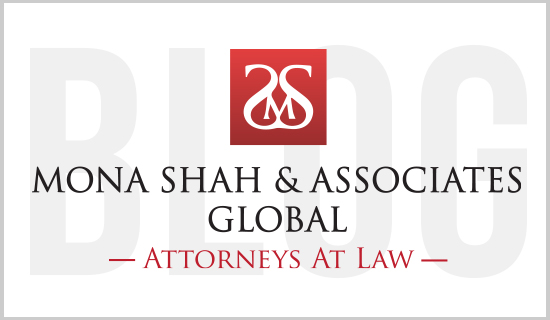
USCIS EB-5 CONFERENCE CALL ON JOB CREATION
On June 4, 2015 USCIS held a conference call on expenses that are includable (or excludable) for job creation. Senior economists from the Immigrant Investor Program discussed the expenses that were includable (or excludable) for purposes of estimating job creation, and answered non-case specific stakeholder questions. Overall the meeting was informative.
Direct, Indirect and Induced Jobs
- EB-5 petitioners must demonstrate that their investment will create or maintain at least ten full-time positions for qualifying employees. For direct jobs, USCIS confirms that the new commercial enterprise must itself be the employer of the qualifying employees who fill in the positions. In the scenario where the job creating entity is not the new commercial enterprise, direct jobs at the job creating entity are considered legally indirect jobs.
- Regional centers and investors may rely on the indirect jobs to meet the job requirement. Regional centers may use reasonable methodologies to demonstrate the job creation, and most of them seem to rely on input/output model as the reasonable methodologies to demonstrate job creation. From USCIS, expenses are mostly used as input into the model, although other types of input, e.g. jobs and revenue, may be used.
Burden of Proof
- USCIS economists believe that the evidences necessary for them to make a decision on whether or how to designate a RC will depend on the general proposal of the project, the organizational structure of the new commercial enterprise and job creating entity (if any), the industry the regional center involves, along with a number of other factors.
- In the meeting, USCIS quoted the burden of proof section of the EB-5 Adjudications Policy Memorandum. Due to the nature of accepted job creation modeling practices, which do not distinguish whether jobs are full- or part-time, USCIS relies upon the reasonable economic models to determine that it is more likely than not that the indirect jobs are created and will not request additional evidence to validate the job creation estimates in the economic models to prove by a greater level of certainty that the indirect jobs created, or to be created, are full-time or permanent. However, USCIC may request additional evidence, to verify that the direct jobs will be or are full-time or permanent, which may include a review of W-2s or similar evidence at the Form I-829 stage.
Eligible Hard Costs
- From USCIS, total aggregated hard costs will likely be insufficient to demonstrate eligibility. Rather hard costs should be broken down into specific expenditure categories, in which way USCIS economists could tell whether the hard costs are reasonable. Furthermore, project can enclose supporting documents to strengthen the credibility, e.g. third-party market feasibility report or developer’s successful track records of similar projects.
- USCIS considers contingency and reserve funds are permissible input for estimating job creation. At the I-829 stage, USCIS will review whether contingency and reserve funds have been spent on eligible expenses.
Eligible Furniture, Fixtures & Equipment (FF&E)
- The applicable multipliers applied to FF&E depend on the type of project.
Eligible Soft Costs
- USCIS considers the stock market transaction that includes the exchange of two paper assets, and brokerage fees ineligible.
- USCIS considers the actual purchase costs of land ineligible because real estate acquisition is not generally recognized as a job creating activity. Matter of Izzumi.
- From USCIS, land transaction costs (e.g. appraisal, site inspection, site clean up) may be eligible. However, these business expenditures may represent costs incurred before the immigrant investor capital was deployed and placed at risk, therefore they may not to eligible. In the Q&A section, USCIS further clarified that, as long as the contemplation of EB-5 show those types of services, the costs would be allowable. However, they refused to define when they would consider “contemplation” to occur, stating that it was case specific.
- USCIS emphasized that projects should detail the portion of actual land purchase costs and costs relevant to the land purchase in their business plan.
- Architectural and engineering services are generally permissible input of the economic model.
- Marketing costs are allowable for the purpose of job creation.
- Legal fees relating to compliance with the EB-5 program or counseling the immigrant investor clients are not permissible, while legal fees related to counseling a business enterprise in the normal course of complying with local regulations, tax laws and employment laws, etc. are permissible. USCIS emphasized that project should make the legal fees input transparent.
- Similar to legal fees, financing fees arising from EB-5 capital are ineligible, while financing fees from other loans or equity funding may be eligible if they are not planned to be replaced with EB-5 capital. In the Q&A section, USCIS further clarified that the bridge financing itself would receive credit for job creation. However, the fees associated with bridge financing were not eligible.
Visa Retrogression
In the Q &A section, USCIS declined to answer a question relevant to visa retrogression because USCIS was working on a visa retrogression policy that would be helpful. Until that policy is posted as draft, USCIS will not be prepared to discuss any visa retrogression issue.
About the Author:
Hui Zeng, ESQ, is focused primarily on business immigration and corporate law. Hui works on the firm’s high profiled business immigration and corporate cases, representing clients with a diverse set of legal issues and concerns. Hui is also experienced in EB-5, having drafted numerous source of funds petitions. She has built a solid set of skills in identifying important issues and delivering positive messages to USCIS’ reviewing officers through her composition of the documents. Hui is familiar with various methods of proving EB5 investors’ source of funds and can guide the clients accordingly.



